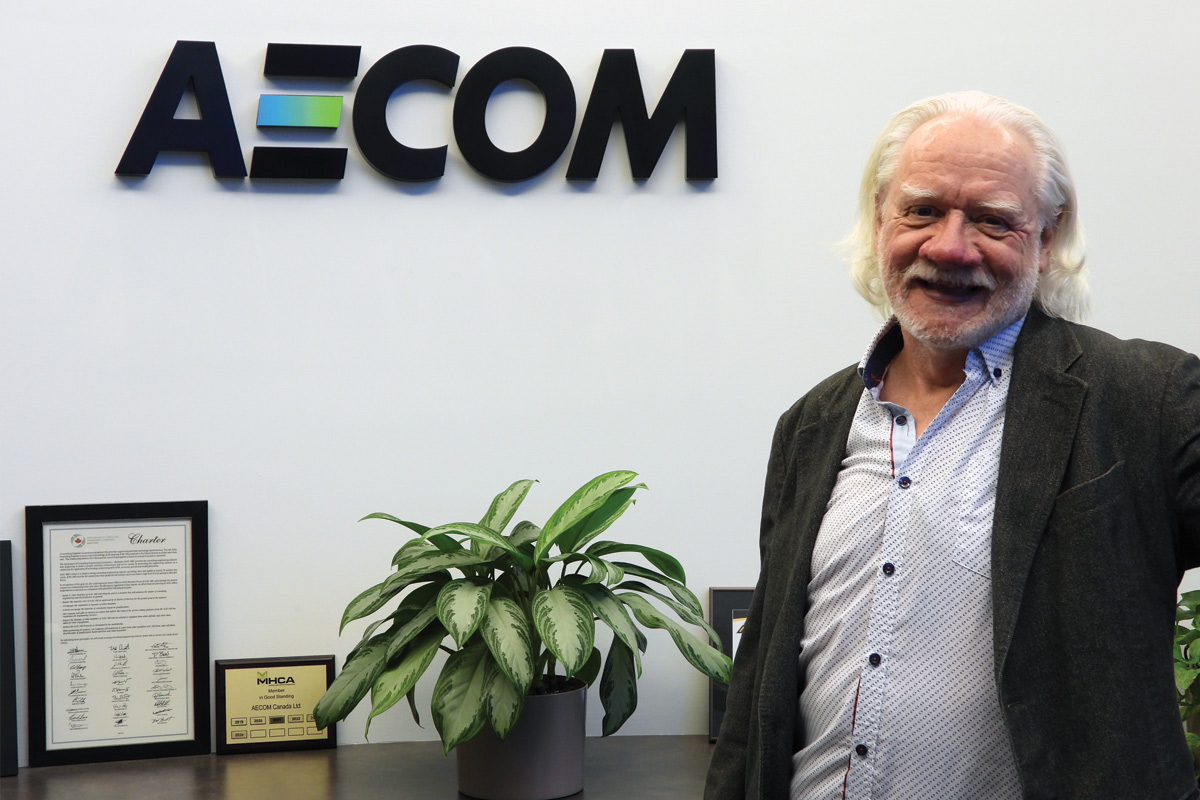
Trenchless Pioneers: David Bennett, PhD, P.E.
Trenchless Pioneers is a special monthly series sharing with readers the trailblazers who grew and expanded the trenchless industry.
David Bennett, PhD, P.E., is the founding partner of Bennett Trenchless Engineers, a specialty consulting engineering firm located in Folsom, California, that focuses 100 percent on trenchless technology. Over his 50-plus year career in engineering, he has driven and developed the advancement of trenchless design and research — a proven trenchless pioneer in his field of expertise.
Bennett got his introduction to trenchless by chance when he crossed paths with another trenchless icon in 1991, when he was a research geotechnical engineer with the U.S. Army Corps of Engineers (USACE). “[That] was the first time I heard the term ‘trenchless technology,’” Bennett remembers, although he had worked in underground design and construction since 1975.
Dr. Tom Iseley visited the USACE Waterways Experiment Station Geotechnical Laboratory to pitch a proposal to construct a new lab facility at the Trenchless Technology Center (TTC) at Louisiana State University, for long-term tests of pipeline rehabilitation systems.
“We broadened the idea and the cost-shared USACE-TTC CPAR trenchless research program in the 1990s provided the opportunity to conduct large-scale testing to establish capabilities and limitations of various trenchless rehabilitation and new installation methods and either confirm or refute some of the claims regarding performance in various ground conditions and scenarios,” Bennett says. “The broad lessons learned during this research program led directly to improved design practices, streamlined permitting policies and eventually impacted construction, though the construction impacts took longer and were more subtle.”
The early days of trenchless design were primitive, with no instruction manual.
“We were basically making it up as we went and trying to learn from the true trenchless pioneers, like Paul Nicholas, who has such an incredible diversity of experience and helped me so much early in my career, Gert Soltau, Martin Herrenknecht, Tom Iseley and others,” Bennett says. “Trenchless engineering really did not exist as a sub-discipline in civil or construction engineering. We had to rely on fundamentals learned in engineering school and apply the scientific method: Develop a hypothesis, test, observe and revise the hypothesis. Repeat until predictions are in decent agreement with observations. That is how scientists and engineers have been solving problems since for forever.”
He notes that the early trenchless engineering days were ripe for new approaches to design with parallel concerted efforts to advance the discipline through education and training and helping owner agencies to better understand how trenchless methods would benefit their project needs.
“I think of so many examples, including the early HDD Rodeos, which helped establish what was realistically achievable with small rig HDD, the USACE and TTC CPAR HDD and microtunneling large-scale field experiments, the Sacramento Regional County Sanitation District (SRCSD) field tunneling tests that Kim Staheli and I and others help execute before SRCSD began a very large capital improvement program in the late 1990s, and the Caltrans 3-day HDD training course that evolved into the HDD Good Practices Guidelines, now in its 5th edition, and associated HDD training course.”
When looking back at trenchless design’s evolution and continued growth, Bennett marvels at its position today.
“We have come a long way,” he says. “Trenchless design has evolved and matured nicely over the last 35 years. More work remains but significant advancements have been achieved. [Trenchless design] had to evolve organically, as it didn’t exist before then.
When asked about his trenchless legacy, Bennett modestly deferred to his peers to judge his contributions.
“I believe I, along with many others, have helped move the ball downfield, regarding trenchless design practice,” he says.
Now at an age at which many look to retiring after a lifetime of giving back to their profession, Bennett has no plans to close the book, but to add new chapters.
And he continues to do just that — adding the classroom to his resume, teaching the next generation of civil/trenchless engineers. In 2023, Bennett accepted a position as Professor of Practice in the Richard A. Rula School of Civil and Environmental Engineering at Mississippi State University.
“I am developing and introducing a mini-sub-curriculum in trenchless design and construction within the civil engineering school,” he says. “After 50 years of combined civil, geotechnical and trenchless research and engineering practice, I have a few insights and ideas to pass along to the next generation of engineers and practitioners. I will let my students judge the outcomes.”
Sharon M. Bueno is editor of Trenchless Technology.




